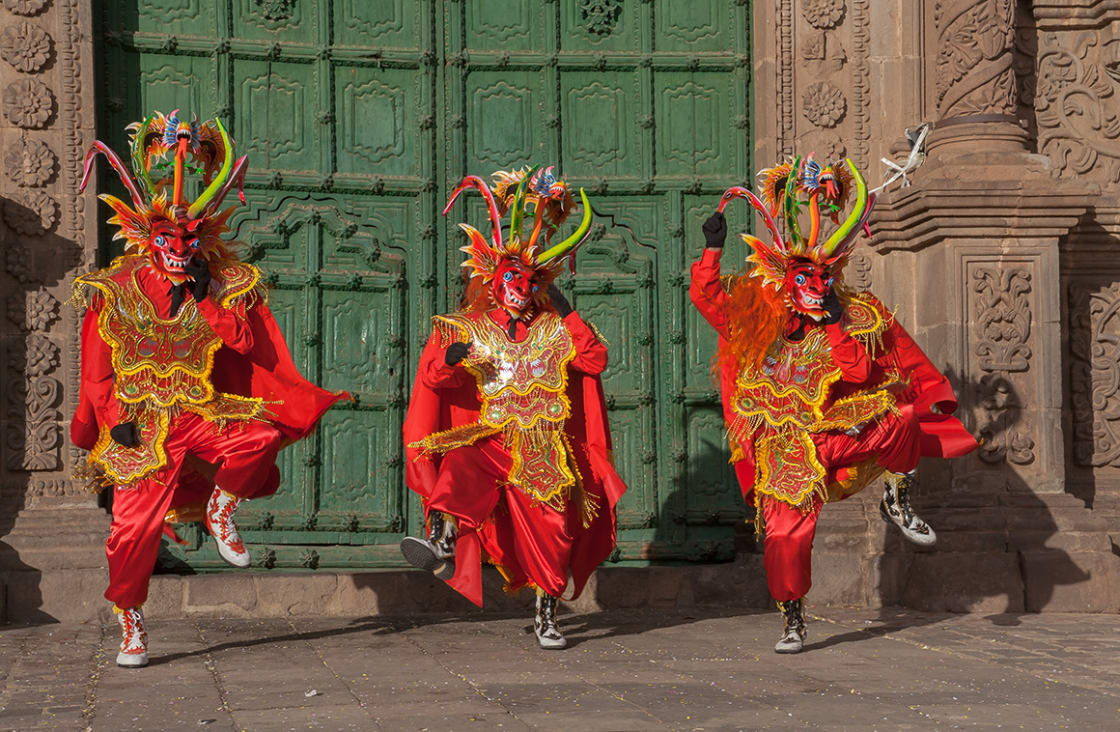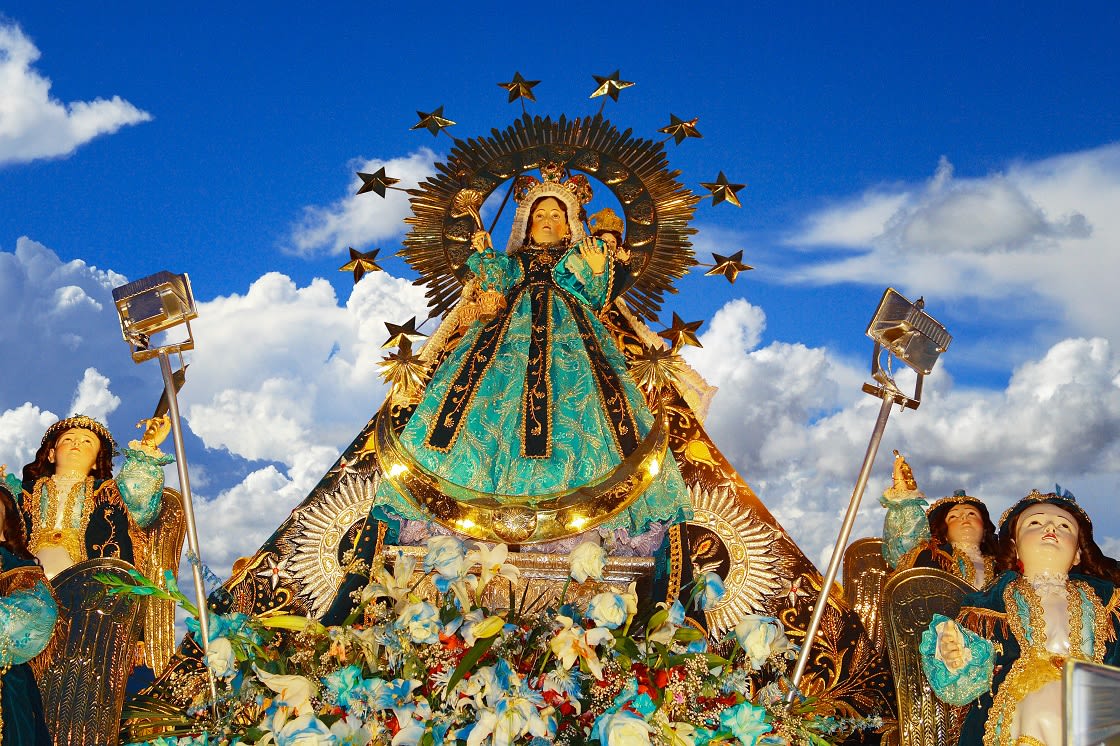
Every year from the 1st until the 14th of February, the quiet town of Puno, on the edge of Lake Titicaca, is transformed by the Fiesta De la Candelaria, a festival to celebrate the Virgen de la Candelaria. The third largest festival in all South America drawing as many as 40,000 of the region’s best dancers, the festivities are a crazy, colorful and choreographed kaleidoscope of swirling dance troupe parades and religious processions that dazzle all who attend.
For 14 days, the streets of Puno are decorated in homage to the Virgen de la Candelaria, also known as La Morenita. But, it’s not just the streets that get a colorful makeover. The locals of Puno and visitors who have traveled to the city, not just from Peru but from all over South America, don flamboyant costumes and parade through the streets. The festival is an explosion of color and sound unlike any you will have experienced before.

Image Of The Virgin Of The Candelaria
The Virgen de la Candelaria is one representation of the Virgin Mary, an iconic figure in the Catholic religion. Her nickname, La Morenita, derives from the fact that the original sculpture of her portrayed her as having dark skin. However, in Peru, La Morenita, somewhat contradictorily, is represented as having light skin.
According to legend, in the 17th century, rebel forces from what is now modern day La Paz laid siege upon Puno. The local inhabitants were greatly outnumbered and did not see how they could possibly come out of this war victorious. Out of sheer desperation, the people of Puno took the Virgen de la Candelaria from the local church and paraded her down the streets as they prayed for protection.
The next morning, the hands of the Virgin burst into flames and the swords of the local people began to glow like fire. The rebels, terrified by this symbol of divine intervention, fled Puno and returned home, leaving the people of Puno to rejoice in their newfound safety.

Candelaria Parade In Puno
The festival starts with a pilgrimage at daybreak to the top of a hill where the homage to the Virgen de la Candelaria is placed. The pilgrims then descend the hill amid fireworks and songs of praise all the way to the San Juan church. This ceremony is then followed by a folkloric dance competition. Over 7000 people usually take part in the competition and the event takes place in the city’s stadium. At the end of the competition, a winner is chosen, but that’s more for show than anything else. The real purpose of the dances is to please the Virgen de la Candelaria.
The rest of the festival sees parades of people dancing in the streets for days on end and feasts pop up all over the city. If you aren’t eating at any point during the festival then the chances are that you are drinking instead. The people of Puno are no strangers to making merry, especially on special occasions such as this one.
If you’re looking for something slightly different to do on your trip to Peru, the Fiesta de la Candelaria should definitely be on your to-do list with its live music performed on zampoña panpipes, outlandish masks and costumes, dancing, singing, eating, performances, fireworks and more. If you are planning on heading to Puno for the Virgen de la Candelaria Festival, however, make sure you book all your accommodation and travel arrangements well in advance as the city will be jam-packed during this sacred time of year.
While Rainforest Cruises aim to provide accurate and up-to-date information, we make no representations as to the accuracy or completeness of any information herein or found by following any link on this site. Rainforest Cruises cannot and will not accept responsibility for any omissions or inaccuracies, or for any consequences arising therefrom, including any losses, injuries, or damages resulting from the display or use of this information.




